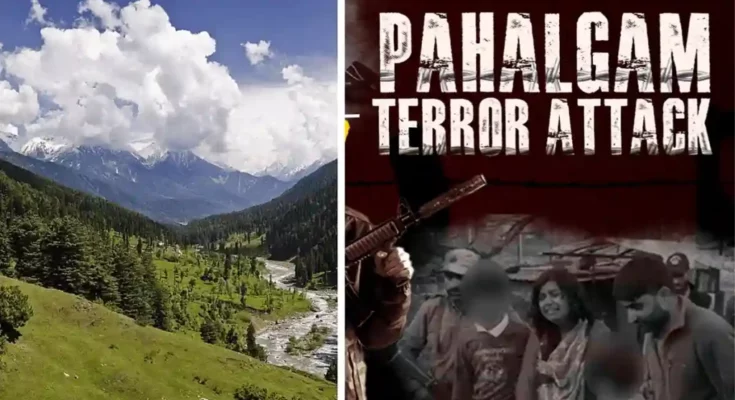The Pahalgam attack on April 22, 2025, was a devastating act of terrorism that rocked the peaceful town of Pahalgam in Kashmir. Located in the Anantnag district, Pahalgam is a popular tourist destination, particularly known for its proximity to the Amarnath Cave, which attracts thousands of pilgrims every year.
Witnesses reported that the militants segregated men, women, and children, forcing some of the victims to recite religious verses before executing them. The attackers, armed with AK-47 rifles and M4 carbines, then fled into the forests of the Pir Panjal range, evading immediate capture. The attack has been condemned by both the Indian government and international leaders, further escalating tensions in the already volatile region.
In response, Indian authorities launched a massive manhunt involving the Army, paramilitary forces, and local police. A heightened security presence has been established in Pahalgam and surrounding areas, with the aim of apprehending the militants and ensuring the safety of tourists. Despite the tragedy, the local community has shown immense courage, with residents coming to the aid of the injured and supporting security efforts.
The Pahalgam attack highlights the ongoing security challenges in Kashmir, where militants continue to target civilians and disrupt the fragile peace. It has sparked concerns about the safety of tourists and pilgrims in the region, raising questions about how to protect these vulnerable populations while addressing the broader security issues facing Kashmir.
- Date and Location
The Pahalgam attack occurred on April 22, 2025, in the serene and picturesque Baisaran Valley, located just a few kilometers from the main town of Pahalgam in South Kashmir’s Anantnag district. Known as one of the crown jewels of Kashmir, Pahalgam has long been cherished for its breathtaking natural beauty, lush meadows, snow-capped peaks, and peaceful rivers. The area is not only a popular tourist destination but also holds deep spiritual importance, as it serves as one of the main base camps for the annual Amarnath Yatra, a major Hindu pilgrimage that attracts thousands of devotees from across India and abroad.
- On that fateful day, what was supposed to be a normal spring morning in Pahalgam turned into a horrific tragedy. Tourists, pony handlers, and local vendors had begun their routines in Baisaran Valley, often referred to as “Mini Switzerland” due to its pristine landscape and panoramic views. The valley, typically bustling with joy and the sounds of leisure, was suddenly plunged into chaos as militants opened fire indiscriminately on unarmed civilians.
- The location of the attack was particularly symbolic and devastating because Pahalgam has historically been viewed as a peaceful area, relatively insulated from the violence that has affected other parts of Kashmir. As such, this brutal incident came as a deep shock to both locals and the wider national community. It not only disrupted the fragile sense of normalcy in Pahalgam, but also instilled fear among tourists and pilgrims who had always regarded the town as a safe haven within the conflict-prone region.
- The attackers chose Pahalgam deliberately, likely aiming to target not only innocent civilians but also the image of peace and hospitality that the town has long represented. The incident raised serious questions about security preparedness in what was considered a low-risk area and highlighted the growing reach of militant groups in even the most tranquil parts of Kashmir. As the news of the Pahalgam attack spread, the town became the center of national attention, forever changing how the world views the once-idyllic valley

Casualties – The Human Cost of the Pahalgam Attack
The Pahalgam attack resulted in a horrifying loss of life, marking one of the deadliest attacks on civilians in Kashmir in recent memory. In the aftermath of the coordinated militant assault in Baisaran Valley, just above the popular tourist town of Pahalgam, at least 26 people were confirmed dead, with more than 20 others seriously injured. The victims included men, women, and even children, many of whom were tourists visiting Pahalgam to enjoy its serene environment or to begin their journey toward the sacred Amarnath shrine. Among the victims were a married couple from Jaipur, Rajasthan, who were on their honeymoon in Kashmir. The couple was staying at a tourist camp in the Yanner area of Pahalgam when militants opened fire on them.
The husband, Tabrez Khan, sustained severe injuries, including a bullet wound to his face, which led to the loss of one eye. His wife, Farha Khan, was also critically injured, suffering a gunshot wound to her shoulder. Both were initially treated at a local hospital in Pahalgam before being transferred to the 92 Base Hospital of the Army, where their condition showed signs of improvement .
In response to this attack, the Rajasthan Chief Minister, Bhajanlal Sharma, personally contacted the couple to inquire about their well-being. The state government approved an interim financial aid of ₹1 lakh each for Tabrez and Farha Khan from the Chief Minister’s Relief Fund to support their medical expenses .
The incident has drawn widespread condemnation and has led to heightened security measures in Pahalgam and other tourist areas in Kashmir. Authorities continue to investigate the attack and have apprehended individuals believed to be involved in the incident .
This attack has not only affected the victims and their families but has also raised concerns about the safety of tourists in Kashmir, a region known for its scenic beauty and pilgrimage sites. The Pahalgam attack serves as a stark reminder of the ongoing security challenges in the region
The attack was indiscriminate and brutal. According to eyewitnesses, the militants opened fire on the crowd without warning, using automatic rifles. Chaos erupted as people ran in different directions seeking safety. However, the narrow trails and open landscapes of Baisaran, combined with the suddenness of the attack, made escape difficult. Those who couldn’t flee were either gunned down on the spot or gravely wounded. Rescue operations were initially carried out by local residents of Pahalgam, who risked their own lives to bring the injured to safety using makeshift stretchers and ponies.
The sheer number of casualties stunned the entire region and underscored the shocking nature of the assault. Pahalgam, once considered a peaceful enclave in South Kashmir, was left shaken. Hospitals in nearby areas were overwhelmed as ambulances and helicopters transported the wounded. The government and security agencies confirmed that it was one of the most severe civilian tragedies to occur in Pahalgam in decades.
The tragic loss of lives has left a permanent scar on Pahalgam’s identity. It has turned the town from a symbol of natural beauty and pilgrimage into a somber reminder of the growing threats facing even the most peaceful parts of Kashmir.
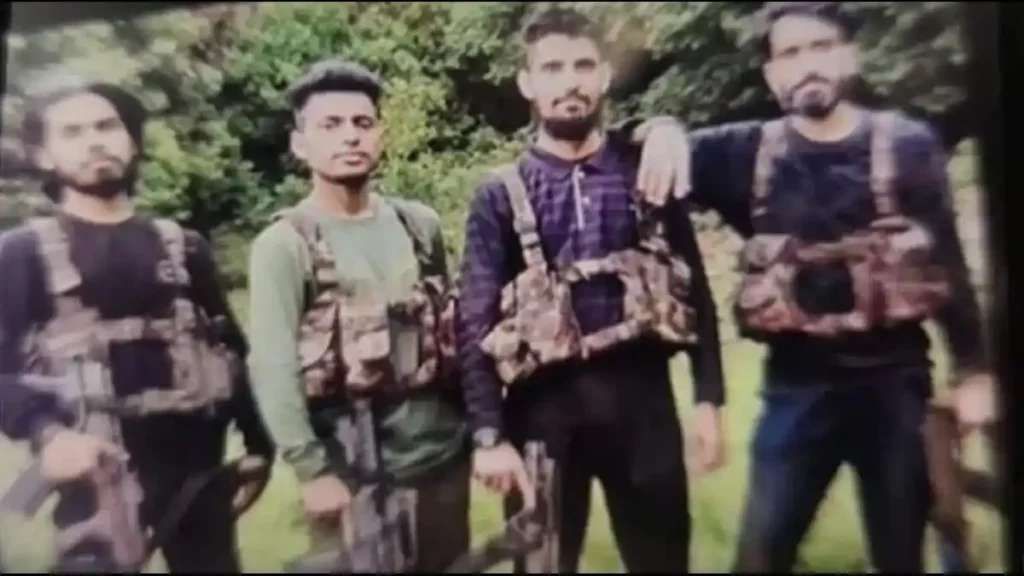
3. Attackers and Weaponry – The Mechanics of the Pahalgam Attack
The Pahalgam attack of April 22, 2025, was not a random act of violence—it was a meticulously planned and executed operation carried out by highly trained militants. Indian intelligence and security agencies identified the perpetrators as members of The Resistance Front (TRF), a militant outfit that has increasingly gained prominence in Kashmir in recent years. TRF is widely believed to be a proxy organization of the Lashkar-e-Taiba (LeT), a Pakistan-based terrorist group known for orchestrating several deadly attacks in India, including the 2008 Mumbai attacks.
The attack in Pahalgam was characterized by its brutal precision and the military-style tactics employed by the assailants. According to eyewitnesses and preliminary forensic analysis, the militants were armed with AK-47 assault rifles and M4 carbines, both of which are capable of rapid and sustained automatic fire. These weapons are not commonly used by local insurgents, suggesting foreign training and sophisticated logistical support. The attackers are believed to have fired over 70 rounds during the ambush, targeting tourists and locals in Baisaran Valley, a popular destination just above the main town of Pahalgam.
The assailants were described as wearing dark fatigues, which helped them blend into the forested terrain surrounding Pahalgam. They struck quickly and with deadly accuracy, taking advantage of the area’s minimal security presence and the lack of immediate armed response. The use of modern assault rifles and military-grade ammunition made the attack particularly lethal, contributing to the high casualty count and complicating efforts by locals and unarmed police to intervene.
The choice of weapons and the calculated manner in which the Pahalgam attack was carried out indicates a shift in militant strategy—moving from isolated incidents to large-scale, high-impact operations intended to generate fear, media attention, and political repercussions. By targeting Pahalgam, a symbol of peace and tourism in Kashmir, the militants sought to destabilize the region and damage its economic and social fabric.
This escalation has forced a re-evaluation of security arrangements in Pahalgam, especially during peak tourist and pilgrimage seasons, with authorities now treating the area as a high-risk zone requiring permanent military presence.
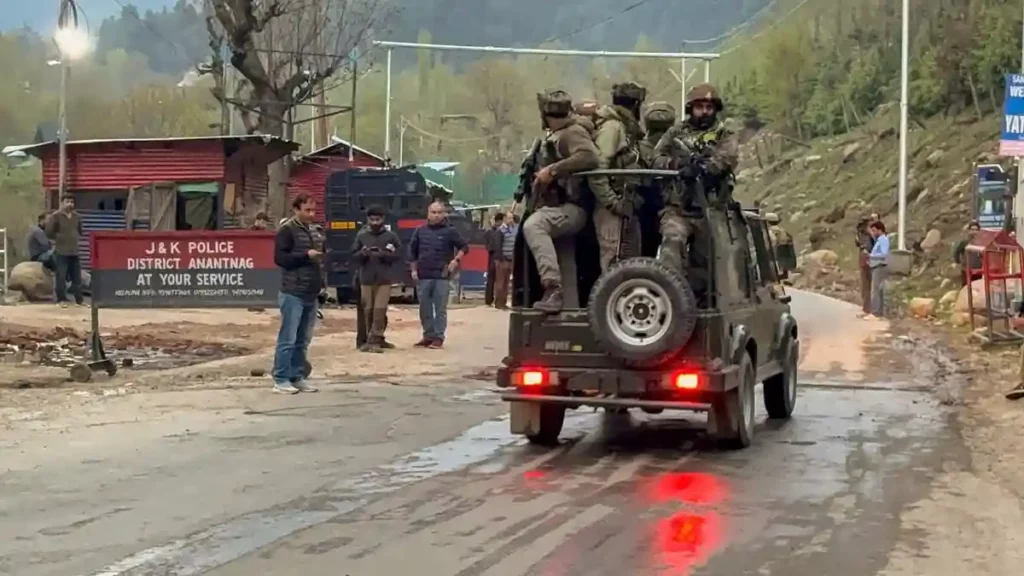
4. Execution Style – Chilling Tactics Used in the Pahalgam Attack
The Pahalgam attack was not only brutal in scale but also horrifying in the method used by the militants. Eyewitnesses to the incident have described a cold, calculated approach by the attackers, highlighting the deeply disturbing nature of the violence that unfolded in the scenic Baisaran Valley near Pahalgam. Survivors and local residents recounted how the assailants, after ambushing a group of tourists, began segregating people based on gender and age, creating an atmosphere of panic and helplessness.
What followed was even more chilling. Several eyewitnesses reported that the militants ordered individuals to recite Islamic verses, and those who were unable to comply—either due to language barriers, religion, or fear—were executed at point-blank range. This level of deliberate cruelty indicated that the Pahalgam attack was not a random act of terror but a pre-planned and ideologically driven operation, likely intended to send a strong and terrifying message.
The precision with which the attackers carried out this selection process speaks to the high level of training and radical indoctrination among the militants. The use of religious coercion as a tool to determine life or death added an extra layer of psychological terror to the Pahalgam attack, deepening the trauma experienced by survivors and families of the victims.
This style of execution has shocked not just Pahalgam, but the entire country. In a town known for its welcoming hospitality and religious coexistence, such an act was especially horrifying. The incident has ignited widespread condemnation and sparked renewed calls for heightened intelligence, community vigilance, and enhanced protection for tourists and pilgrims visiting Pahalgam, which until now had been regarded as a peaceful refuge in Kashmir.
5. Local Heroism – Courage Amidst Chaos in the Pahalgam Attack
Amid the horror and violence of the Pahalgam attack on April 22, 2025, stories of extraordinary local heroism emerged, reminding the world of the resilience and humanity that still exist in times of crisis. As gunfire erupted in Baisaran Valley, a popular tourist spot just above the peaceful town of Pahalgam, many residents didn’t run for safety—instead, they rushed toward danger to help those caught in the ambush.
Among the most courageous were local pony handlers, guides, and vendors, many of whom had known the tourists personally or were guiding them through the valley when the attack began. With no weapons or formal training, these brave individuals risked their lives to evacuate the wounded, often using makeshift stretchers made from blankets, sticks, and wooden planks. Their efforts were critical in ensuring that many of the injured received timely medical attention.
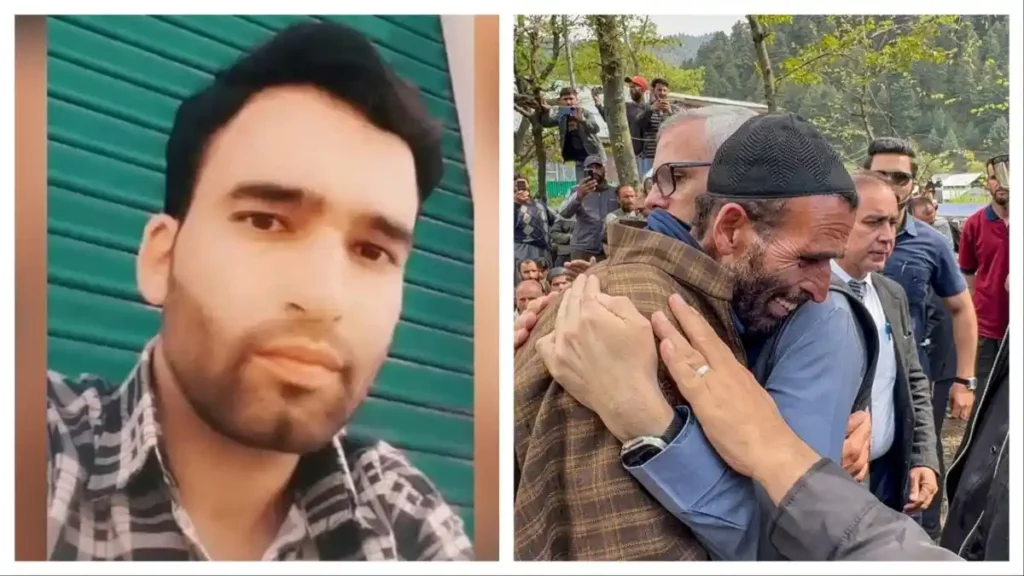
One name that has stood out in the aftermath of the Pahalgam attack is Adil Hussain Shah, a 28-year-old pony handler from a nearby village. Eyewitnesses say that Adil confronted one of the militants and attempted to wrestle the weapon from his hands to protect the nearby tourists. In doing so, Adil was shot and killed. His sacrifice has since been hailed as an act of selfless bravery, and his story has inspired both sorrow and pride throughout Pahalgam and the rest of the country.
The courage displayed by Pahalgam’s locals played a crucial role in saving lives and preventing an even greater tragedy. In a place torn apart by terror, it was the strength and compassion of ordinary people that stood as a powerful reminder of the unbreakable spirit of Pahalgam and its people
Local residents, including pony handlers and guides, risked their lives to protect tourists, with some helping evacuate the injured using makeshift stretchers. One local, Adil Hussain Shah, died while trying to disarm an attacker.
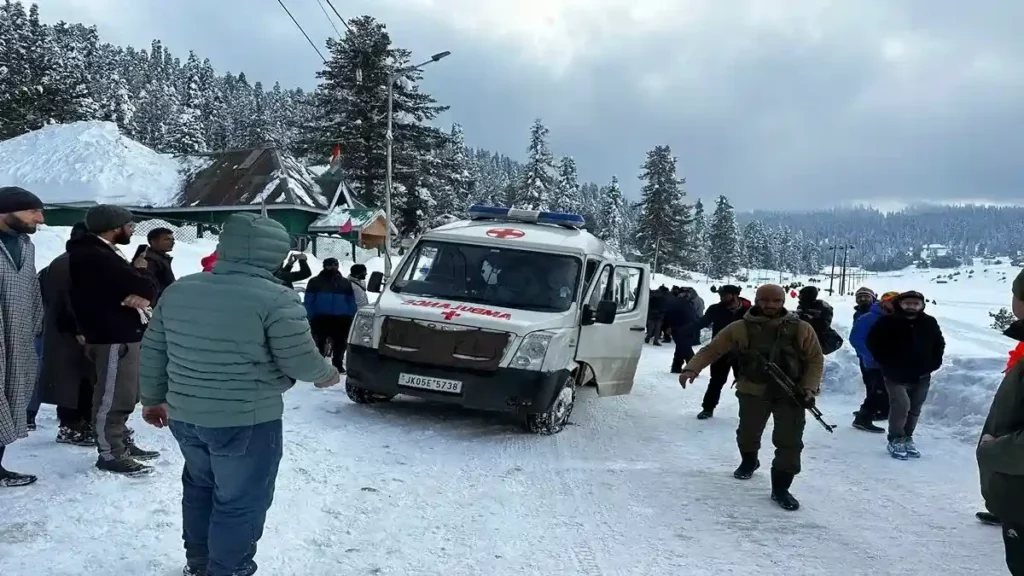
6. Government and Military Response – Swift Action Following the Pahalgam Attack
In the wake of the horrific Pahalgam attack on April 22, 2025, the Indian government responded with immediate and decisive action. Recognizing the gravity of the incident—which claimed the lives of 26 civilians and injured over 20—the central and state authorities moved swiftly to prevent further escalation and to bring the perpetrators to justice. Pahalgam, a once-tranquil tourist destination in South Kashmir, was transformed overnight into a high-security zone, as multiple security agencies were mobilized to track down those responsible for the carnage.
The government launched a massive manhunt, deploying specialized units from the Indian Army, Central Reserve Police Force (CRPF), and the Jammu and Kashmir Police. These forces initiated intensive search and cordon operations in and around Pahalgam, particularly in the rugged and forested terrain of the Pir Panjal range, where the militants were believed to have fled after carrying out the attack. The area’s difficult geography posed significant challenges, but with the support of aerial surveillance drones and ground-based tracking teams, the search was conducted with high precision.
In addition to the military response, the Ministry of Home Affairs held emergency meetings with the Jammu and Kashmir administration to reassess the security framework in Pahalgam and other tourist-heavy areas. Temporary shelters were established for stranded tourists, and emergency medical camps were set up in Pahalgam town and nearby hospitals. Roadblocks, identity checks, and increased patrolling became the norm as authorities prioritized restoring a sense of safety.
The Pahalgam attack also prompted diplomatic conversations, with Indian officials raising the issue of cross-border terrorism at the international level. Intelligence agencies began coordinating with cyber units and human intelligence networks to identify the handlers and support systems behind the militants.
While the security forces have yet to capture all of the assailants, the government has vowed to intensify counter-insurgency efforts in and around Pahalgam, ensuring that such a tragedy is not repeated. The swift and robust military response highlighted both the vulnerability of the region and the nation’s commitment to protecting civilian lives in sensitive zones like Pahalgam
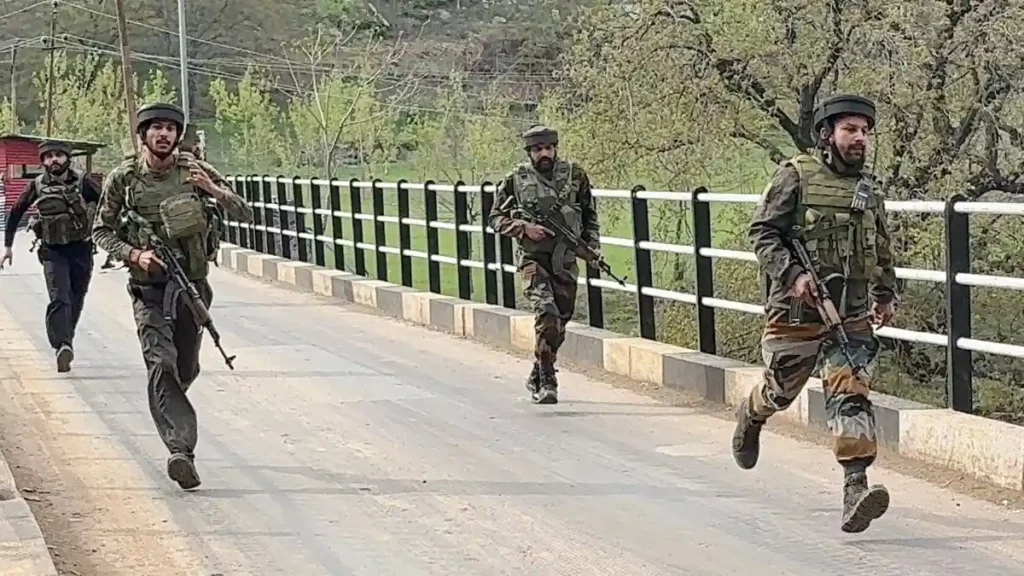
7. Diplomatic and National Impact – Aftershocks of the Pahalgam Attack
The Pahalgam attack on April 22, 2025, not only shocked the nation but also sent ripples across the international community. The brutality of the assault, which left 26 civilians dead and over 20 injured in the scenic valley of Pahalgam, drew strong global condemnation. Leaders from countries including the United States, United Kingdom, France, and Israel issued official statements denouncing the terrorist act and expressing solidarity with India. The attack, carried out in one of Kashmir’s most peaceful and tourist-friendly towns, exposed the growing boldness of terrorist networks operating in the region.
In response, the Indian government initiated major diplomatic and strategic moves. Most notably, New Delhi suspended the Indus Waters Treaty, a longstanding agreement with Pakistan that governs water sharing from rivers flowing through Kashmir. This marked one of the most severe diplomatic responses by India in recent history and underscored the government’s message that terrorism will not be tolerated—especially in regions like Pahalgam, where tourism and peace have long coexisted.
Additionally, India undertook massive upgrades to its border security infrastructure along the Line of Control (LoC) and International Border, fearing potential infiltration routes used by the attackers. Surveillance technology, fencing, and troop presence were increased significantly to prevent any future incursions, especially those aimed at destabilizing vulnerable zones such as Pahalgam.
Domestically, the Pahalgam attack forced authorities to re-evaluate the security protocols in all tourist and pilgrimage zones across Kashmir, including Gulmarg, Sonmarg, and the Amarnath Yatra route. Special attention was given to Pahalgam, which is a critical base camp for the pilgrimage. The government announced plans to install more checkpoints, deploy rapid response teams, and introduce new technology such as facial recognition and drone surveillance in and around Pahalgam.
Moreover, the tragedy led to intense debates in Parliament, where opposition and ruling parties alike called for a national security review. The Pahalgam attack has now become a turning point in how India views and manages its internal and external security challenges, particularly in the sensitive and strategically important region of Kashmir.

8. India’s Response
In the aftermath of the attack, which resulted in 26 fatalities—including 25 Indian nationals and one Nepalese tourist—India initiated a series of significant retaliatory measures. The Indus Waters Treaty was suspended, affecting water-sharing agreements between the two nations. Additionally, India closed the Wagah-Attari border crossing, expelled Pakistani diplomats, and canceled the SAARC visa exemption scheme for Pakistani nationals. These actions were taken in response to the attack, which India attributes to militants from the Pakistan-based group Lashkar-e-Taiba (LeT), operating under the alias The Resistance Front (TRF) .
The Indian government has also intensified security measures within Jammu and Kashmir, particularly in Pahalgam, a key route for the Amarnath Yatra pilgrimage scheduled to commence on July 3, 2025. Plans are underway to deploy permanent Army and paramilitary forces to enhance protection in the region The New Indian Express.

9. Pakistan’s Official Response
Pakistan has expressed deep concern over the tragic loss of life in Pahalgam, condemning the attack and offering condolences to the victims’ families. The Foreign Office issued a statement expressing sorrow over the deaths of tourists in Anantnag district, Indian-administered Kashmir, and wished for the injured’s speedy recovery .Daily Pakistan English News
In retaliation to India’s actions, Pakistan announced the suspension of the Simla Agreement and the closure of its airspace to Indian airlines. Additionally, Pakistan warned that any diversion of shared river waters under the Indus Waters Treaty would be considered an act of war.
Media and Analytical Perspectives Pakistani media outlets have provided extensive coverage of the attack. Some defense analysts have labeled the incident a “false flag operation,” suggesting that it was staged to malign Pakistan and Kashmiri freedom fighters. These perspectives highlight the ongoing tension and differing narratives surrounding the event.
